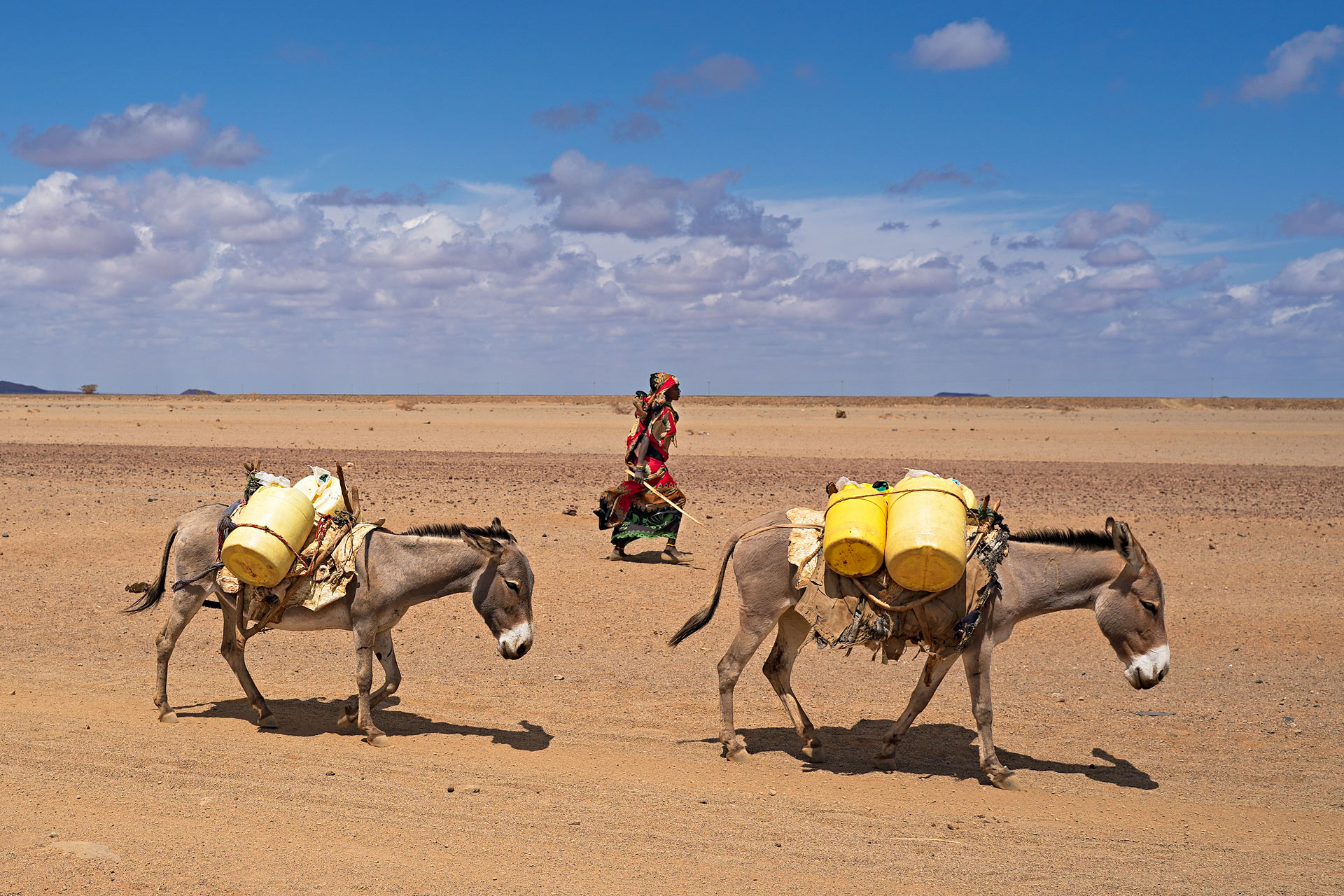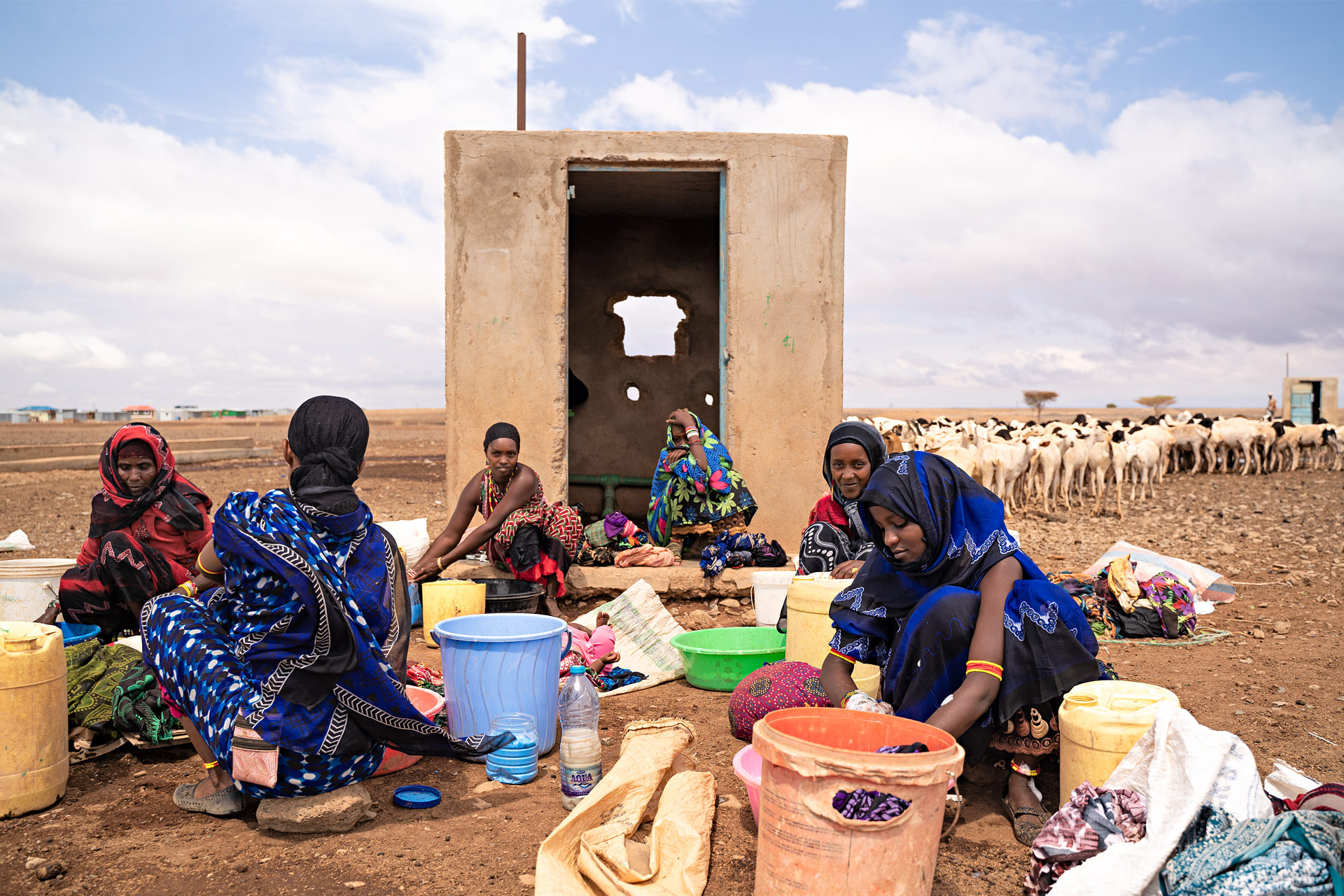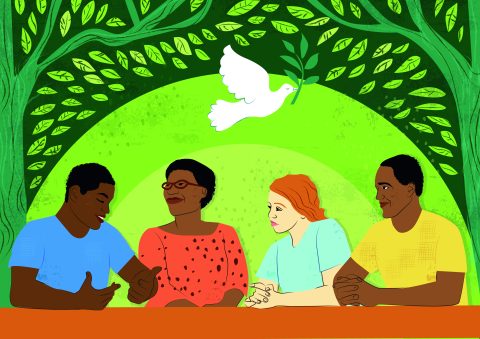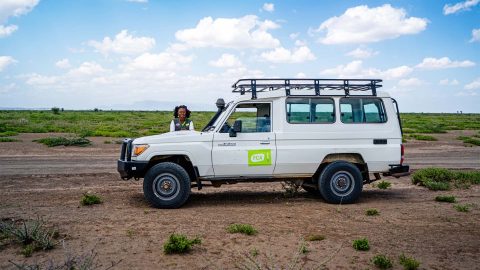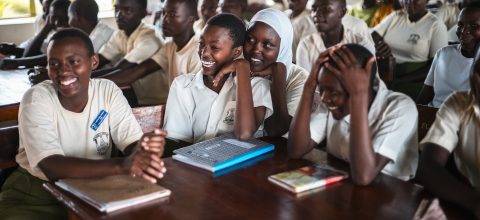When your whole fortune dries up. The two-year drought has taken everything from the pastoralists of northern Kenya
East Africa is struggling through an unprecedented drought. Since October 2020, four consecutive rainy seasons have failed, and the fifth seems to fail as well. In northern Kenya, the nomadic population has lost all of their property, meaning cattle, which has traditionally been by far the most popular investment in the region. The situation can be compared to a total collapse of the stock exchange in Finland. Lives are in danger, too.
SHEDO ISACKO ROBA, 25, started her journey to the nearest borehole with her friends yesterday. The distance is approximately 40 kilometres, and the young woman, familiar with the conditions of the journey, covers it in a couple of days. There is no water in Shedo Isacko’s home village, Gareru in the north of Kenya.
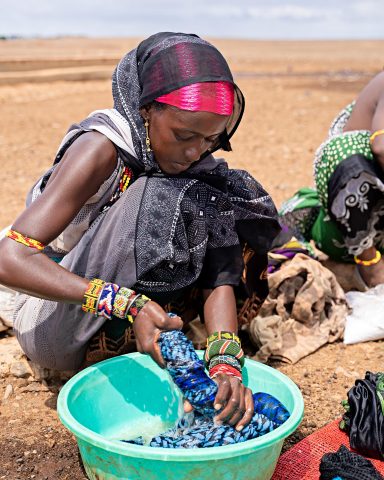
Shedo Isacko knows how much hardship the failure of the rainy seasons causes in the lives of the locals.
“For the past two years I’ve come here to get water and look for food for my children,” she says whilst washing her laundry at the well.
The clothes are so covered in sand dust that the water instantly turns brown, and they need to be rinsed several times.
After finishing her load of laundry, Shedo Isacko fills up her worn-out yellow plastic jugs with water and ties them on a donkey’s back for the way home. 40 litres of water is enough for a family of five for two days, but due to the drought, Isacko can’t find enough food.
“We share what we can get between us. Sometimes we have food, sometimes we don’t. Life is tough.”
The cattle perish first – then the people
Isacko’s family lives a nomadic life, just like most people in the region. The drought has killed most of the family’s livestock. Shedo Isacko mourns not only for the lost property but also for what’s ahead.
“I’m afraid there will be no more rain. When the cattle have already died as a result of drought, we’ll soon be losing human lives. That’s what scares me.”
According to official figures, by the beginning of November no-one has died directly due to the ongoing drought or food shortage. In neighbouring Somalia, the situation is several steps ahead: based on a UN report, thousands of people had died by mid-October and half a million people are at risk of death. In the Marsabit region in northern Kenya, health officials are extremely concerned about the direction of development.
“At the moment, the deaths in the region aren’t directly caused by malnutrition, but they are strongly linked. Many deaths, particularly among the elderly, are caused by illnesses that hit undernourished people,” says Bokayo Arero, the director of nutrition at the Marsabit health department.
Undernourished people are more likely to contract pneumonia, diarrhoea, and tuberculosis. The elderly, children, pregnant women, and disabled people are in a particularly vulnerable position. According to a health screening conducted in October, 92 percent of the surveyed children under the age of five in Marsabit were malnourished, and approximately half of them had received urgent treatment.
Especially in the case of children, malnutrition leads to serious, life-long consequences.
“Both physical and mental development suffer from malnutrition,” Bokayo Arero emphasises.
Food shortage also puts people under mental strain. Those whose entire property dries up can suffer from mental health issues.
“The population here is completely dependent on their livestock. There have even been a few reports of suicides being committed, when people notice that they have nothing left,” notes Bokay Arero.
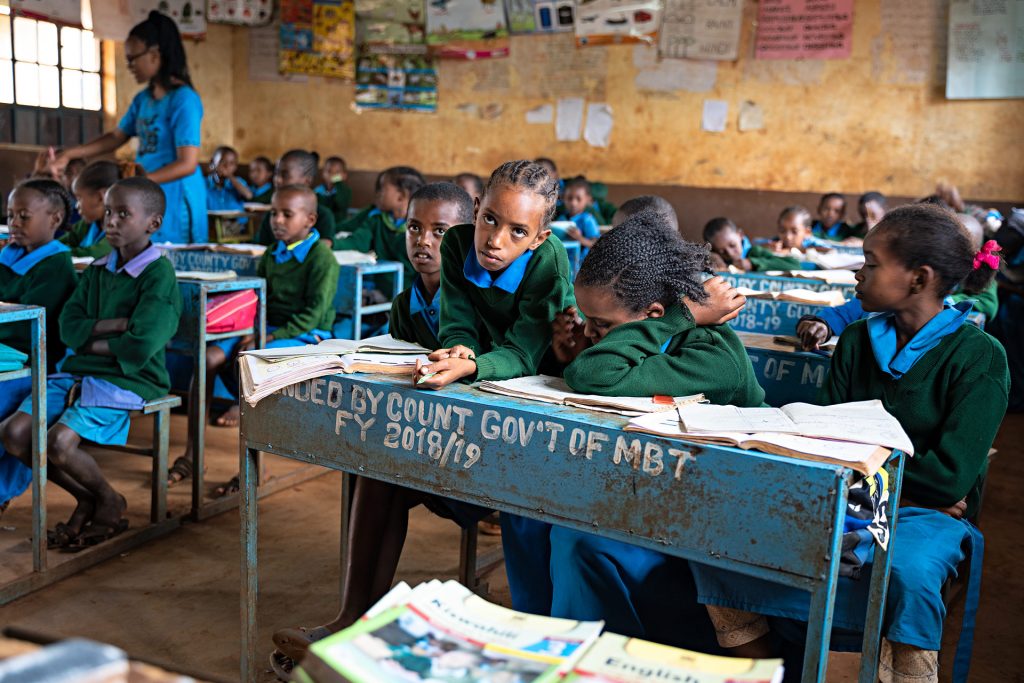
Hungry children have trouble learning
The drought and the resulting food shortage have an impact on schooling, too. A few dried-up trees stand in the schoolyard of the Boru Haro village school, and the most energetic of the children are playing in the shade. The rest of the pupils sit and rest under the roofs of the building.
The principal Wako Salesa Dambi says that the drought and lack of food make children stay home instead of coming to school. The pupils who do come to school tend to be tired, and staying focused in class can be difficult.
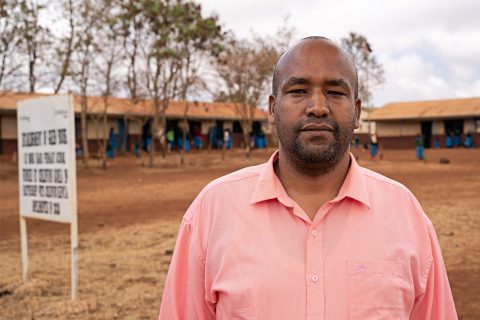
“Even just for the sake of humanity, I think it’s important that the basic needs of the pupils are met. If their tummies are full, they listen, learn, and do their homework,” Wako Salesa points out.
Previously the state supported school lunches, but currently there’s no support available. After the elections in August, the resources are scarce, as the resulting transfer of power has brought financial transactions between the state and the local government almost to a standstill.
A school lunch is an important meal for children and a reason to come to school for many. Particularly younger students are likely to stay at home, if they haven’t had anything to eat the night before.
12-year-old George Guyo has returned to school after being absent for 10 days. Now he sits in the front row learning how to read a clock.
“My parents haven’t got money for food, so I can’t come to school. When I don’t get enough food, my health gets worse.”
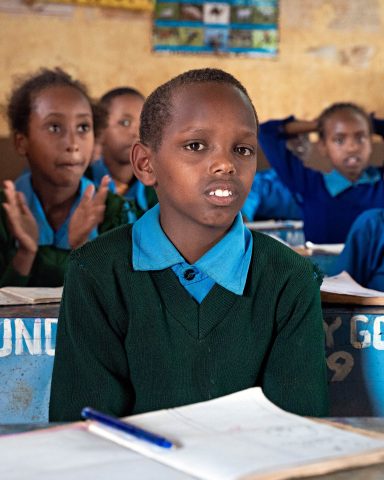
George Guyo can clearly tell how hunger makes it more difficult to go to school, and his learning results deteriorate.
“When I’m hungry, I think about food all the time, and I can’t focus in class.”
“My biggest wish is that there would be enough food for us children and that we’d be able to maintain a balanced diet.”
In December in Kenya, a national exam will be held to students finishing primary school. The result of the exam determines which secondary school the pupil will continue in. Wako Salesa fears that the results will be negatively impacted by the food shortage.
“Getting a good exam result will be difficult for the children who’ve had to skip breakfast and lunch. It would be great if we could offer food for the pupils, but it seems impossible. The parents are currently so poor that they can’t afford to pack a lunch for their kids,” says Wako Salesa.
“This two-year drought is completely exceptional”
One of the main reasons to the poverty in the region is that the majority of cattle has either died or in such a dire shape that it’s lost its value. Previously, a cow would be sold for 20 000 Kenyan shillings, or approximately 160 euros. Now, a cow is worth as little as 500 shillings, or four euros, as the livestock is in bad condition and many people are simultaneously trying to sell their animals to the butcher.
Locally, the situation is comparable to a total market crash. Traditionally, the nomadic population has invested its entire wealth in livestock.
50-year-old Elema Gufu Sharamu has, in his words, been a nomad since he was born. He has brought his caravan of camels to drink from the well repaired by Finn Church Aid. He used to have plenty of cows and goats, but most of them have died because of the food shortage caused by the drought.
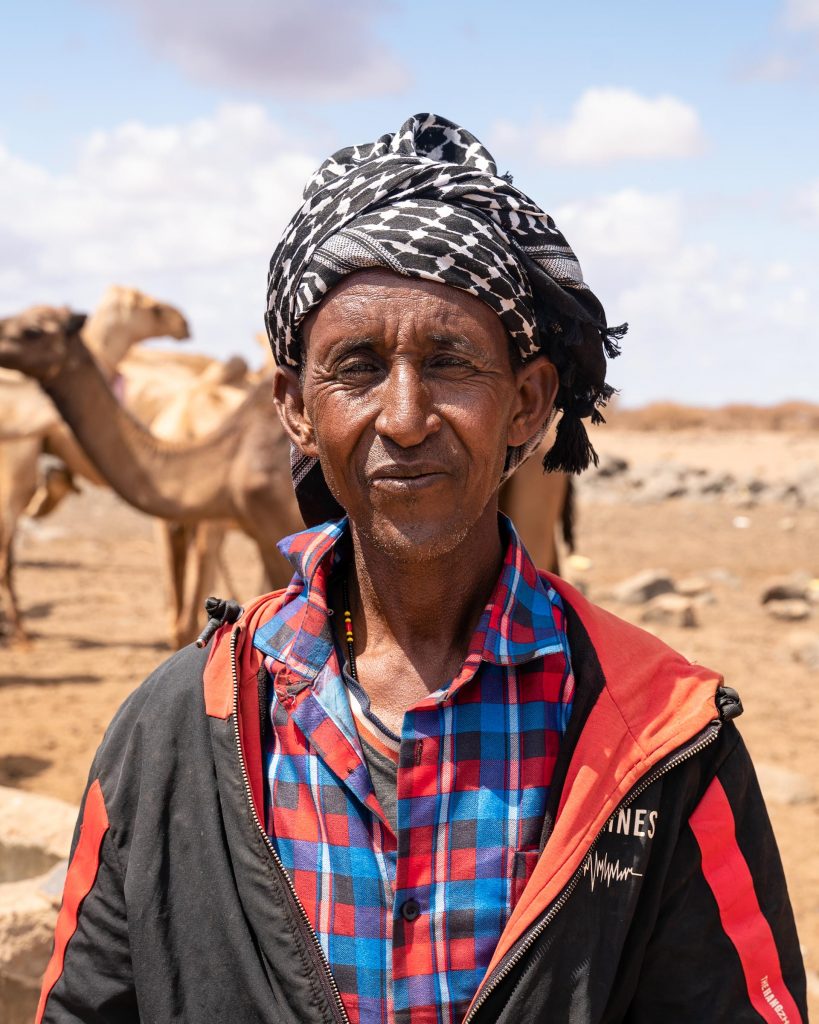
“There have been dry periods previously, but this two-year drought is completely exceptional. The circumstances have led to grass not growing, and there’s nothing for the animals to eat.”
As a nomad, Elema Gufu is used to being on the move. It takes him eight hours to walk to the nearest bore well.
“This well is really important to us. If it didn’t exist, we’d have to travel even further.”
Sharamu’s family comprises of two wives and nine children. He used to be able to easily provide for them all, but the situation has changed.
“I take cattle to the market and sell it there, but the prices have dropped dramatically. I haven’t got enough money for food, and sometimes we must skip lunch. It feels bad not to have enough food for my family.”
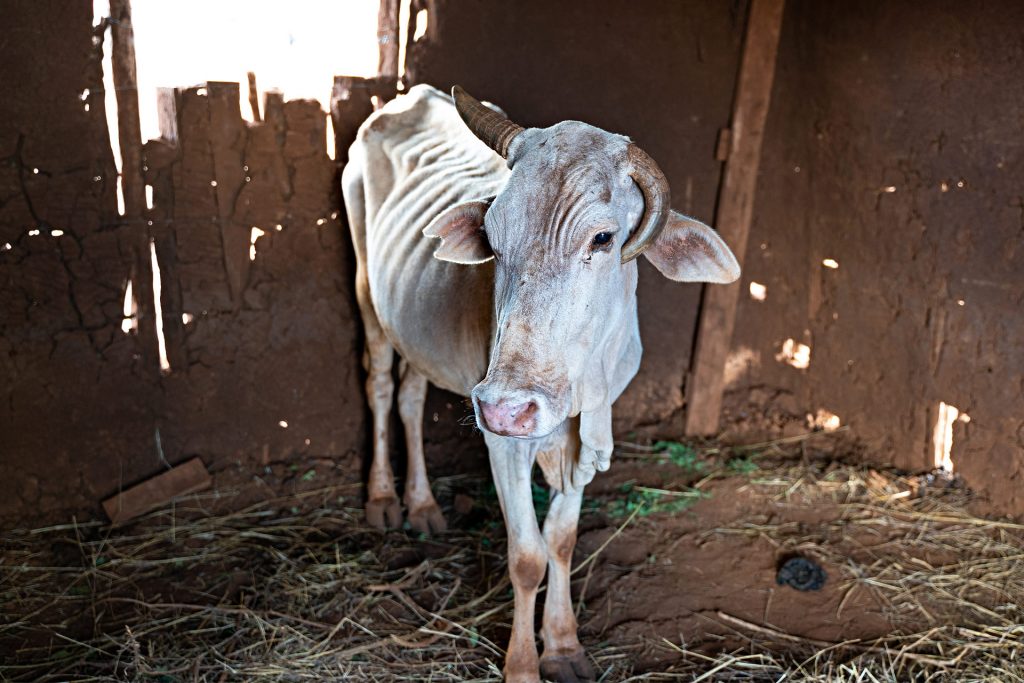
Currently Elema Gufu Sharamu borrows food from his neighbours, which isn’t a sustainable solution. He’s afraid for his family.
“If this drought continues and the rest of my cattle dies, we too will die. I have no other option. I can’t read, and I won’t be able to get another job. There’s nothing for me in the city.”
The health officials of Marsabit have noticed that parts of the population are drifting towards towns and cities. The director of health Bokayo Arero deems this problematic.
“I don’t think it’s a good survival mechanism. There really isn’t enough work for even those who already live near the cities. Now, an entire family might move to live with a young man working a day job at a construction site. A single income simply isn’t sufficient.”
Conflicts in the area escalate
However, sometimes circumstances force people to move close to population centres. In Marsabit, there are tensions between tribes that every now and then spew out for various reasons. A year ago, the home of Biftu Boroyani’s family was burned in clashes. The family of four used to live in a house of their own, had a small allotment that provided them with enough food, and a few goats.
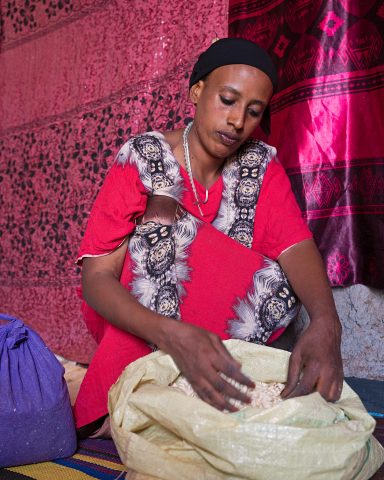
“When I lived there, I was able to live in peace. I felt no stress. We used to make a good living from our plot.”
Now the family has had to come up with new ways to make a living. Biftu Boroyani’s husband is working in construction. When they have enough food at home, Biftu cooks a larger batch at once and sells it to the nearby construction workers.
“Recently it’s been difficult for both of us to find work opportunities. Because of the drought and lack of money few people are building right now, so making money is hard.”
Because of the difficult situation, Biftu Boroyani used to be able to offer food for the family only once a day. She was stressed out when she noticed how hunger made her children too tired to play.
Now the Boroyani family has received a cash allowance from Finn Church Aid. The 74-euro allowance is given in three consecutive months directly to a mobile phone in mobile money. Biftu Boroyani has received the first instalment, which she spent on food and school fees. Although food is scarce, Biftu Boroyani thinks that the children’s education is at least just as important.
“If the children get a good education, they can get a good job and then support us later. That’s why I make sure the school fees are covered.”
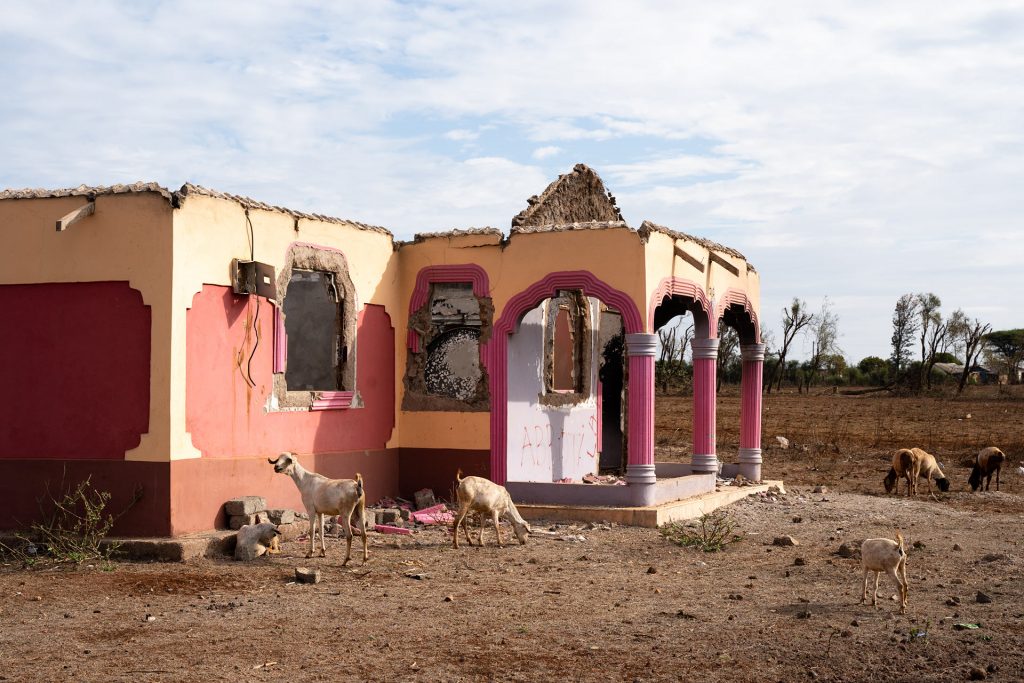
Although the first part of the allowance was spent on food and education, Biftu hopes to be able to use the coming instalments on establishing a small business. She’s planning on buying basic supplies from the city and then selling them near her home.
However, Biftu is still scared that the drought will drag on.
“I can only pray for the rain to come.”
Text and photos: Björn Udd
